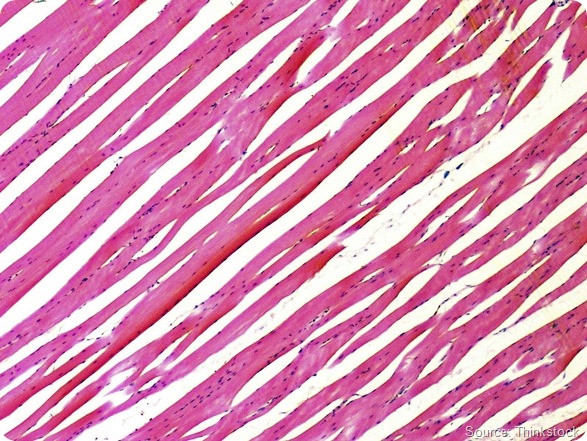Drugs used to treat erectile dysfunction may be able to slow disease progression in boys who suffer from the muscle wasting disease Duchenne muscular dystrophy.

The results of a study published in Neurology showed that a single dose of either sildenafil or tadalafil immediately improved blood flow to the muscles in a group of boys who suffer from the condition.
Lead author of the study Ronald Victor (Cidars-Sinai Heart Institute, California) and colleagues hope the findings will lead to the identification of treatments that will help slow progression of the disease, which eventually causes the degeneration and loss of healthy muscle tissue.
In Duchenne muscular dystrophy, the muscles are deprived of nitric oxide, a chemical that signals the dilation of blood vessels during exercise and increases blood flow to the muscles. Already used to regulate blood flow in the penis, sildenafil and tadalafil are drugs that work downstream of this nitric oxide to relax blood vessels.
“If you can restore the blood flow you might be able to slow the disease,” explains Victor.
For the study, the researchers tested blood flow in the muscles of ten boys (aged 8 to 13 years) with Duchenne muscular dystrophy and compared the results with those obtained for 10 healthy boys of the same age. The boys were tested while they were resting and again while they were performing a hand grip exercise. The results showed that the boys with Duchenne muscular dystrophy had blood flow abnormalities.
Next, the team gave a single dose of either sildenafil or tadalafil to the boys in the dystrophy group and their muscles were tested again. After a fortnight, the boys were given the other drug and the tests were repeated one last time.
“The effect was immediate and dramatic,” remarks Victor. After taking either sildenafil or tadalafil, the boys in the dystrophy group had the same blood flow response during exercise as the healthy controls. The researchers also say the effects were more pronounced with higher doses.
Although there is no evidence that the treatment can actually prevent muscle atrophy, the results are encouraging, says Victor. “This is not a cure, but it is the first stop toward identifying potential treatments.”
Commenting on the study, research director at the Muscular Dystrophy Campaigns Dr Marita Pohlschmidt says the next step is to establish whether the improved blood flow can slow muscle wastage and therefore help prevent progression of the disease. “There are potential treatments addressing the underlying genetic causes of Duchenne muscular dystrophy in clinical trials and therapies that could slow progression are vital to the many who continue to await them.”